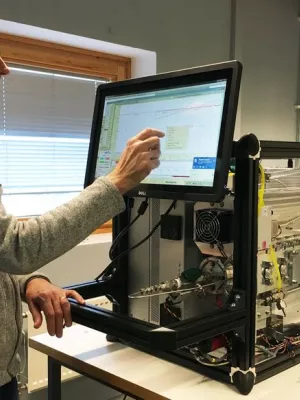
Erik Swietlicki
Professor

Cloud-nucleating properties of the Amazonian biomass burning aerosol: Cloud condensation nuclei measurements and modeling
Author
Summary, in English
The cloud-nucleating properties of the atmospheric aerosol were studied in an area under strong influence of vegetation burning. The measurements were part of Large-Scale Biosphere Atmosphere Experiment in Amazonia-Smoke Aerosols, Clouds, Rainfall and Climate (LBA-SMOCC) and were carried out at a ground site located in the state of Rondonia in southwestern Amazonia, Brazil, September to November 2002, covering the dry season, a transition period, and the onset of the wet season. The concentrations of cloud condensation nuclei (CCN) were measured with a static thermal gradient CCN counter for supersaturations ranging between 0.23 and 1.12%. As a closure test, the CCN concentrations were predicted with a time resolution of 10 min from measurements of the dry particle number size distribution (3-850 nm, Differential Mobility Analyzer (DMPS)) and hygroscopic growth at 90% relative humidity (Hygroscopic Tandem Differential Mobility Analyzer (H-TDMA)). No chemical information was needed. The predicted and measured CCN concentrations were highly correlated (r(2)=0.97-0.99), and the predictions were only slightly lower than those measured, typically by 15-20%. Parameterizations of the predicted CCN concentrations are given for each of the three meteorological periods. These are based on averages taken during the afternoon hours when the measurements at ground level were representative for the aerosol entering the base of convective clouds. Furthermore, a more detailed parameterization including the mixing state of the aerosol is given, where the hygroscopic properties are expressed as the number of soluble ions or nondissociating molecules per unit volume dry particle.
Department/s
- Department of Physics
Publishing year
2007
Language
English
Publication/Series
Journal of Geophysical Research
Volume
112
Issue
D14
Document type
Journal article
Publisher
Wiley-Blackwell
Topic
- Physical Sciences
Status
Published
ISBN/ISSN/Other
- ISSN: 2156-2202